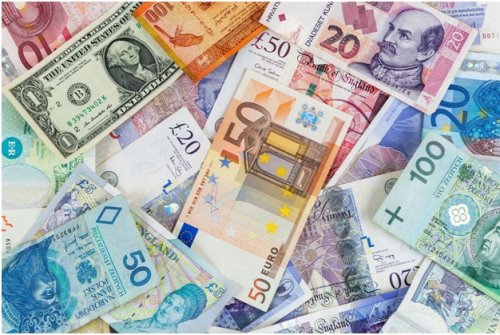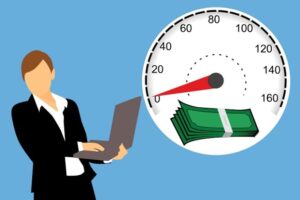Are you planning a trip to South Africa or perhaps considering investing in the country’s economy? If so, it’s essential to understand the local currency, the South African rand. The rand is the official currency of South Africa and is widely used throughout the country, making it crucial to have a good grasp of its value and buying power.
In this guide, we’ll take a deep dive into the world of the South African Rand and provide all the information you need to get started. From its history to its current status in the global economy, we’ll cover everything you need to know about South African currency. So, whether you’re a traveler, trader, or investor, read on to discover the ins and outs of the South African rand!
Table of Contents
Learning the Ropes About South African Rand
The official currency of South Africa is called “Rand,” and the official code for it is ZAR. The symbol for rand is “R,” so if you have 100 Rand, you’d write it down as R100.
Namibia, Zimbabwe, and, most shockingly, Switzerland also utilize this currency. If you want to visit any of these countries, you should exchange your money for rands. This way, you won’t have to worry about calculating the difference between USD and Rand since you’ll already have the right currency in your hands.
The approximate value of USD to Rand is 1 to 18.16. Hence, for one dollar, you’ll get roughly 18 rands. Of course, this might change in the future, as currencies are volatile by nature. So, if you find yourself in need of South African Rand, it is best to check the value at the time.

Fun Fact About the ISO Code ZAR
The South African rand’s ISO code is ZAR, which stands for “Zuid-Afrikaanse rand” in Dutch. But, what do the two have in common?
Well, the name originates after the Witwatersrand, which means “white water ridge.” That is where Johannesburg was founded, but also where most of South Africa’s gold reserves were discovered.
The History of South African Rand
When the Union of South Africa was founded as a British Dominion in 1910, the South African pound served as the country’s official currency. In 1961, When South Africa became a republic, the first South African Rand was created. At a rate of 2 rands to 1 pound, or 10 shillings to the rand, it took the place of the South African pound as legal money.
Throughout the first ten years of its existence, the rand traded at a parity of 1.40 US dollars to 1 rand. The rand’s value in relation to other currencies significantly decreased during the following years due to inflation and growing worldwide resistance to South Africa’s apartheid regime, which was an institutionalized regime of racial discrimination.
The value of the rand was enhanced in 1980 by a huge increase in gold prices. Nevertheless, the opposite happened when the price of gold fell in the years that followed. Rond value against the dollar stood at R2.23 in 1985, which was the lowest point since its foundation.
The rand’s value in relation to the US dollar recovered almost half of that loss between 2001 and 2006, returning to a roughly six-to-one exchange rate. Jumping to 2014, it sold at a little over 15 ZAR to 1 USD.
As it dropped to just under 18 ZAR to 1 USD in 2016, the rand’s exchange rate to the US dollar touched an all-time bottom.
The USD to ZAR exchange rate was roughly 15 ZAR for every Dollar as of 2020. High unemployment, crime, political turmoil, and poverty continue to harm the nation’s economy and devalue its currency.

Coins and Banknotes
The South African rand has an interesting story when it comes to the looks of its banknotes. The “regular” banknotes feature colorful images of animals. However, to recognize the significance of the Nobel Peace Prize winner’s contribution to national peace, the South African Reserve Bank issued a series of banknotes with the image of Nelson Mandela in 2012. They are popularly called the “Randela.” Both the banknotes are used to this day.
There are coins of 1, 2, 5, 10, 20, and 50 cents and 1, 2, and 5 rands in circulation. They each feature a different animal on one side of the coin. The smallest coin, costing one cent, is composed of copper, while the largest, at five rands, is made of silver.
The banknotes come in 10, 20, 50, 100, 200, and 1,000 rands. As previously mentioned, they are colorful, and each depicts a different animal, just like the coins. For example, the R10 is green and features a picture of a rhino, while the R200 is orange and depicts a leopard.
However, all the newly printed banknotes are the “Randela’s”, so the ones with the “Big Five” wildlife species are also referred to as old banknotes.
Interestingly, the “Randela’s” are also in different colors, matching the ones with animals. The only difference is that instead of an animal head, there is a portrait of Nelson Mandela.
Fun Facts about South African Rand You Didn’t Know
The Bilingual Currency
There are 11 official languages in South Africa, and most people can speak at least two of them. The two most common languages are isiZulu and isiXhosa, with barely one in ten individuals (mostly people of color) speaking English at home.
So, it’s only natural that the first idea was to print the money in different languages.
The Rand was first printed in two different ways: one in English and one in Afrikaans. Despite many languages spoken in South Africa, the remaining are the ones with English on the front.
Most Counterfeit Bill
The most counterfeited bill in the state’s history is the 200 rand note. Because of the relatively high quality of the counterfeit notes in circulation, the South African Reserve Bank and commercial banks even pulled the whole 1994 series of 200-rand banknotes in 2010. Also, some businesses no longer accept them as payment.
Wrapping Up
Congratulations! You’ve made it to the end of our guide to the South African rand for beginners. We hope that you’ve found this guide to be informative and helpful as you navigate the world of South African currency.
By understanding the history, current state, and factors that affect the Rand’s value, you’ll be better equipped to make informed decisions when traveling or investing in the country.
Good luck!




